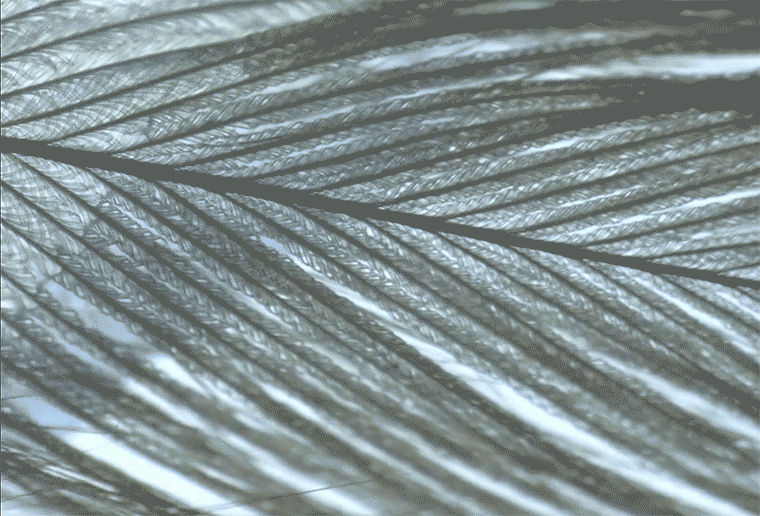A study that really holds water
Published on by Water Network Research, Official research team of The Water Network in Technology
The Namaqua sandgrouse, a bird native to the deserts of southern Africa, has a unique way of helping chicks survive before they can fly: the males frolic in the nearest watering hole and carry water back in their belly feathers for them to drink.
In 1967, researchers found that the feathers can absorb 25 milliliters of water after a five-minute dip and retain about half of that after a flight of more than 20 kilometers. But not until now, in a paper by MIT professor Lorna Gibson and Johns Hopkins professor Jochen Mueller, had anyone identified what makes this possible.

Video of water spreading through the specialized sandgrouse feathers, under magnification, shows the uncoiling and spreading of the feather’s barbules as they become wet.
MUSEUM OF COMPARATIVE ZOOLOGY, HARVARD UNIVERSITY
Using scanning electron microscopy, micro-computed tomography, and video imaging, the researchers discovered that sandgrouse feathers have an unusual design. Most feathers have a central shaft from which smaller barbs extend, and then smaller barbules extending from those. In the inner zone of a sandgrouse feather, however, the barbules have a helically coiled structure close to their base and then a straight extension. In the outer zone, the barbules are simply straight. Both parts lack the grooves and hooks that hold the flat vane of contour feathers together in most birds.
When the feathers get wet, the coils unwind and rotate to be perpendicular to the vane, producing a dense forest of fibers that can hold water through capillary action. At the same time, the barbules in the outer zone curl inward, helping to hold the water in.
While previous work had suggested that surface tension was key, “what we did was make measurements of the dimensions and do some calculations to show that that’s what is actually happening,” Gibson says. Her group demonstrated that the varying stiffnesses of the different feather parts play a crucial role.
Attached link
https://www.technologyreview.com/2023/06/27/1073725/a-study-that-really-holds-waterTaxonomy
- Water Storage
- Water Storage Systems